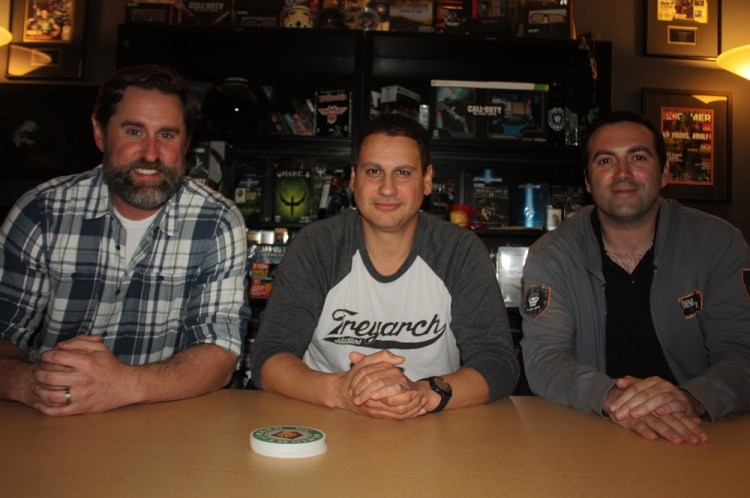GamesBeat: How did you refine or do things differently with the extra year?
Bunting: For multiplayer, the extra year was pivotal. We talked about the evolution of our previous games. In those two-year development cycles, the kind of risks that we’re taking right now—We wouldn’t have been able to do that with just two years. It needs so much iteration.
Lamia: Let’s give a good example. Even after you had the core movement set, you iterated on maps, that first set of maps we did, for …
Bunting: It was a year working on the first set, the three maps we were working on. Each one was constructed in a different way so we could learn how the different map shapes and the different ways you pace the combat felt with the different movement mechanics as they came in. It was a year of development just on the first three maps.
Lamia: We weren’t developing maps and developing movement separately — here’s some jumps and some wall-runs and a map. It was honed and iterated on together. In a shorter cycle you can’t take that kind of time to do that. You can talk a bit about it on the campaign side, too, because it’s pretty dramatic there as well.
Jason Blundell: Three years allowed us the ability to invest in tools and technology. When you’re making a campaign experience you’re trying to create an atmosphere, a feel or a vibe. To get the size and the scale, and to make these more agnostic abilities — rather than hand-holding you through each moment of the experience — really meant that we had to open stuff up and let the builders and the artists work on it and realize it.
Taking a bit of the system-based design mentality for multiplayer into campaign — all the customization, all this other great stuff — that’s a big change from the campaign structure in the past, where it’s very much cinematic moment to cinematic moment. We’re keeping that in there, but three years allowed us to explore that, explore a detailed narrative.
In the past you could start off and have a loose story and then build your levels around it. You’d make cuts where you need to or put this map after that map and connect the story together that way. But because of the complexity of this story, because of the atmosphere and the investment in one character moving through the whole thing, it had to all be mapped out and planned and constructed in that detailed fashion.
Lamia: In more specific terms, once we decided we wanted to have a four-player co-op campaign, have open area designs and level-agnostic abilities that allowed players to customize any of those characters, be able to go in different order — once you play through you can go back and have different experiences, or play with somebody who hasn’t played through and be able to make the game hold together.
That instantly necessitated a completely new AI system for Call of Duty. It’s adaptive. It has to deal with emergent situations. It has to deal with a variety of different characters you have. Call of Duty hasn’t seen a new AI system in a long time. It’s had changes to its AI system — we’ve evolved it — but this is a totally ground-up. Then there’s the level designers and the game designers adapting to this new A.I. system and map design. The complexity of the systems overlay is incredible. There are so many cybercore abilities and rigs and things you have to be able to account for.
If you play the beginning of the game, you only have a very few things you can upgrade. You’re going to make your choice. We’ll roll it out to you and you’ll say, “Oh, am I going to upgrade my cybercore ability, update my rig? What am I going to do?” But these needs to be able to be fun and adapt to you even if you’re a more advanced player, if you go back to it, or if you’re playing with other people who have completely different abilities. The AI has to adapt to all of that.
On top of that we rewrote our graphics engine. There’s a deferred renderer in there, an entirely new lighting system and effects system. I wanted to bring back those insane battles that only Call of Duty could do. A good example is the sewer defend area there. There is so much stuff going on in that once place. We couldn’t render all of that, at that quality, at 60 frames per second, unless you do an overhaul of that whole system. We also rewrote our entire tool chain so the content developers could iterate more quickly in this new technology.
We’re really happy that we got that extra year. It’s established both Black Ops III and everything we’ll make beyond Black Ops III.



